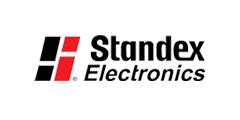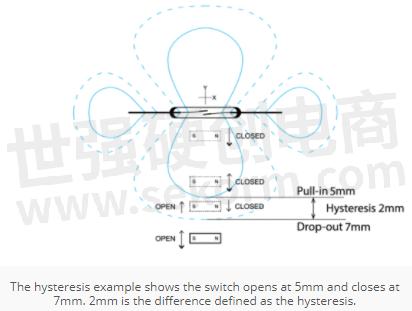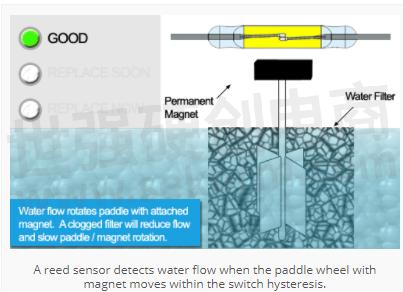Reed Switches Are Quickly Becoming the New Magnetic Sensing Technology of Choice for Low Power Designs

Demand for Reed switches has risen largely in the recent past due to new power usage standards. Reed switch technology uses no power in its passive state, making it a suitable magnetic sensing alternative to Hall effect sensors. Especially, uses where low power consumption is key.

1. Two Diverse Magnetic Sensing Solutions; One Key Difference
Reed and Hall effect technologies use different design concepts. Both switch types operate using an external magnetic field. However, Hall effect still requires an electrical circuit to operate and produce an output signal in the passive state. On the other hand, reed switches consume no power and only operate in the presence of a magnetic field. Therefore, one key difference between the two magnetic sensing technologies is their power efficiency.

2. Power Efficiency Shifts Magnetic Sensing Technologies
“Demand for reed switch sensors has risen greatly in light of Germany's energy transition and the need to prioritize energy efficiency,” says Martin Reizner, Product Manager Magnetic Position Sensors EMEA. Reizner does not see this trend coming to an end any time soon. “More and more sensor manufacturers are selecting reed technology for reducing power consumption.” Home appliances and battery-powered devices are making the biggest shift to reed switch technology. In other words, reed switches are quickly becoming the new magnetic sensing technology of choice for low power designs.
3. Both Sensing Technologies Address Specific Uses
The reality is: “Both sensing technologies have their own specific uses,” Reizner adds. He believes that Hall effect sensors are better suited to high-speed detection above 1kHz. Where the reed switch meets its physical operating limits. Conversely, Reizner recommends reed switches for switching below 1kHz such as with flow meters.
1) Hysteresis Improves Water Flow Detection
Hysteresis is the difference between the open and closure points of the switch; unique to reed technology. Defining switch hysteresis in specific applications gives reed switches another advantage over Hall effect sensors. The below example explains how hysteresis is used in a water flow meter.
Example: Let's say the reed switch contacts close at a pre-defined pull-in point of 5mm from the magnet. And the contacts open or drop-out at 7mm. Then the switch hysteresis equals 2mm. In other words, 5mm / 7mm=0.71×100%=71% meaning the switch will activate at 71% of its release point

Using Switch Hysteresis in Water Flow
A water flow meter with a paddle wheel is one example where a given hysteresis value may be set. Random water waves or vibration can cause the paddle wheel to move slightly. As a result, the paddle's movement would activate the sensor. In turn, causing a false water flow detection. Defining the switch hysteresis will ensure the water flow reaches a set rate before the sensor activates. In conclusion, only reed switch hysteresis can prevent false water flow readings. Inversely, Hall effect sensors activate or deactivate with any water movement.

2) World's Smallest Reed Switches
Reed switches are made of simple mechanical elements which are cost effective to produce compared with Hall effect sensors. Hall sensors are much harder to make. Additional external switches and amplification circuitry is needed. As well as, temperature stability, short-circuit protection and power consumption.
However in terms of small size, Hall effect sensors take the lead over reed sensors. Though, Standex Electronics now produces the smallest reed switch in the world that is just under 4 mm long. As a result, compact reed switch sensor designs now compete with miniature Hall effect sensors.
3) Magnetic Sensors Reliability Perform in Harsh Environments
Reed switch technology performs reliably in harsh environments. The hermetically sealed glass envelope protects the reed switch from the environment. In other words, dust, oil, water, chemicals, and corrosion will not affect the sensors operation. Moreover, reed switches perform reliably in extreme hot or cold temperatures of -65℃to +150℃. In contrast, Hall effect sensors have tighter operating range of -55℃ to +125℃.
4) Magnetic Isolation
Reed switches don't require any protection against electromagnetic discharge (ESD). So, reed switches will not magnetically interfere with nearby system electronics. Inversely, Hall effect sensors require magnetic isolation because they use a constant power supply to emit an output signal. Furthermore, special ESD protection is needed to prevent current leakage.
5) Contact Resistance
Finally, a reed switch's insulation resistance is higher than 10^15 Ohms exceeding that of a Hall effect. Reed switches still produce leakage currents in the low femptoamp range. Values so minor however they don't apply to medical devices. In summary, simple reed switches measure tiny voltages and operate at low 50mΩ contact resistance. Well below what a Hall effect can achieve.
Moreover, reed switches have a wide operating range by design. Switching loads ranging from nanovolts(nV) to kilovolts (kV), from femptoamp to amps and up to 10GHz. Even the smallest reed switches isolate up to 1,000 volts without ESD protection.
4. Conclusion
In summary, both switch types have their own specific uses depending on the sensing application. Reed switches are diverse in size, sensitivity, and hysteresis. All which can be altered for a given application. While Hall sensors can be programmed to overcome weakness, reed switches are more versatile and energy efficient.
Hall effect sensors are work well in high-speed RPM switching above 1kHz. Additionally, Halls reach higher signal repeatability due to a lack of switch hysteresis. That said, Hall switches operate 500 million cycles in their lifetime. Though, reed switches can switch billions of cycles under 5 Volt loads.
- +1 Like
- Add to Favorites
Recommend
- Latest Littelfuse Ultra-Miniature 7 mm Reed Switches Provide High-Reliability, Longer Life Cycles
- Reed Switches vs. Hall Effect Switches,Two Sensor Solutions for Technical Applications
- Latest Littelfuse Sub-miniature 12.7mm Reed Switches MATE-12B Provide High-Reliability, Longer Life Cycles
- Why and How to Choose Standex Electronics Reed switches
- Failure Examples in Dynamic Contact Resistance Testing for Reed Switches
- LS03 Series Standard Liquid Level Sensor for Horizontally Mounting, Feature Magnetic Floats which Activate Reed Switches When the Liquid Level Rises or Falls
- What Are the Advantages of the Hall Switch Over the Reed Switch?
- Standex Electronics Announces the MK33 SMD Reed Switch Series: Optimized to Switch High Power in a Small Footprint
This document is provided by Sekorm Platform for VIP exclusive service. The copyright is owned by Sekorm. Without authorization, any medias, websites or individual are not allowed to reprint. When authorizing the reprint, the link of www.sekorm.com must be indicated.





























































































































































































































































































































































































































































































































































































































































































































































































































































































